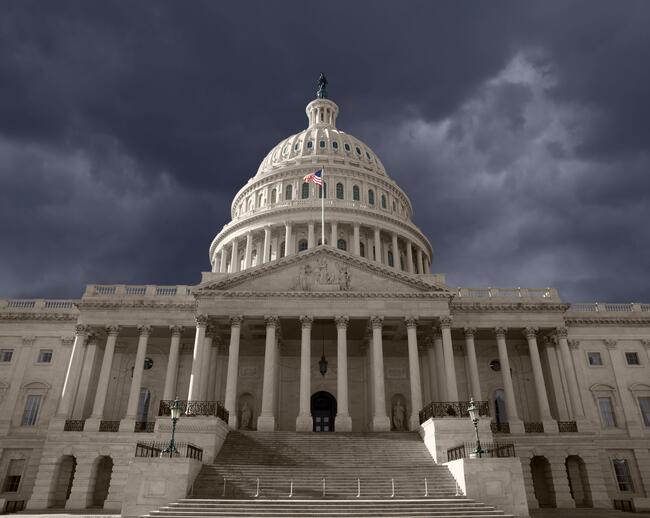You have /5 articles left.
Sign up for a free account or log in.

trekandshoot/iStock/Getty Images Plus
For years I’ve been hearing a small group of lobbyists promote the crazy idea that Congress should increase the minimum number of credits required to qualify for full Pell Grants from 12 to 15.
Yes, I can do the math. I understand that 15 times 4 gets a theoretical community college student to program completion on time, just as 15 times 8 gets a theoretical four-year college student to the same goal. But having taught at a community college, I understand that what might make sense in theory could have devastating consequences for the very real people who are in the greatest need of federal student aid.
Requiring the average community college student to take 15 credits each semester to maintain full Pell Grant eligibility—a change included in the budget reconciliation bill passed last month by the House—likely will significantly reduce completion rates rather than increase them (as promised by those who promote the 15-credit minimum), increase the number of unnecessary and untransferable credits community college students earn beyond those required for their major, increase college costs, and prevent many low-income students from pursuing degrees in STEM fields or adjacent fields like nursing, physical therapy or occupational therapy. Let me explain.
Already, we know that too many community college students graduate with more credits than needed to fulfill their degree requirements. In part this is because many community college students need to complete remedial education prior to enrolling in courses that count toward their major. Since these students cannot enroll in courses in their major until they complete remedial education, but they need to enroll in 12 credits to qualify for full Pell Grants while taking those remedial classes, they often fill their schedules during those early terms with elective fluff courses that do not count toward the requirements of their major and that often do not transfer to other colleges for credit.
In other words, we have clear and discernible evidence that even at 12 credits, far too many students are wasting time and money taking courses of little or no academic value, simply so that they can hit the target number of credits they need for financial aid purposes. By changing the minimum number of credits required for full-time Pell from 12 to 15 credits, this problem will only get worse—increasing the unnecessary costs associated with earning a college degree. Mark my words: If this policy makes it to President Trump’s desk, in 10 years those same policy wonks who insisted upon the 15-credit minimum will be all aflutter about the increase in the number of unnecessary credits earned by community college graduates … and the dramatic decline in completion rates of Pell-eligible students.
This problem doesn’t go away when remedial coursework is completed. We know that many community college students who qualify for a full Pell Grant are over 24 years old, and therefore are financially independent, and many have children of their own and hold down paid employment in excess of 10 hours per week—just to pay the rent and put food on the table. Even with a full Pell Grant, they need to keep their jobs to pay their life expenses. Just because a few policy wonks realize that 15 times 4 gets them to on-time completion does not mean that these students will magically find another three to five hours (or more) in their week to devote to an additional class.
Given the growing number of students who need a multitude of accommodations because they have learning challenges and attention deficit disorders, how could anyone think that adding more courses to their required loads will yield improved outcomes? Have the sponsors of this very bad idea ever interacted with a living, breathing, struggling student?
If students could find the time to be successful in taking 15 credits each semester, they would already be doing it. Many colleges already incentivize students to take 15 credits each term. But for many students, completing 12 credits is already a struggle, and 15 would be simply impossible. It is not that these students aren’t smart or that they lack motivation. The problem is that for too many students, life is already incredibly complicated and three additional credits would push them beyond the tipping point. Already, students who drop out of college frequently claim that exhaustion from juggling so many things, along with financial concerns, are the main reasons they leave. Adding three more credits to hit full Pell eligibility is like rubbing salt in a wound.
As the House bill sets a 30-credit threshold for the academic year, theorists might argue that these students could still take 12 credits each semester and then make up the additional courses in the summer. Realists understand that for many of the more demanding majors, upper-level courses are not offered in the summer, often because the most senior faculty who own those courses are not interested in working in the summer. Internship hosts may be unwilling to take students in the summer, since six-week terms are too short to be productive and the staff needed to support them are more likely to be vacationing.
Also, because summer courses tend to meet every day rather than a few times a week, working students may simply be unable to enroll in them. Beyond that, low-income students who are parents may need to be home in the summers since they may not have access to affordable day-care programs or day camps for their children. Summer day care is hard to arrange even among parents who can afford to pay whatever camps charge. Low-income parents struggling to improve their own education as adults may want to be even more engaged with their children in the summer to prevent the well-documented summertime academic regression that harms so many K–12 students, and, in particular, lower-income students. Again, while the 12 plus 12 plus 6 math may work for policy wonks, it may be entirely impractical for the real students affected by this policy change.
The problem is even worse for the ambitious Pell-eligible student who wishes to pursue a STEM major or STEM-adjacent major (such as nursing or allied health). Many STEM classes are offered in four-credit rather than three-credit increments since they include three hours of lecture and three hours of laboratory time each week. I wonder if the policy wonks who divided 60 by 15 also tried to divide 15 by 4? Can we please run more of these ideas by people who know something about STEM education and the many reasons why American students feel shut out of STEM programs before we write them into legislation?
To graduate on time, many STEM majors are required to take two four-credit laboratory courses per semester. As a result, a STEM student will either enroll in 14 credits (4 plus 4 plus 3 plus 3) or 17 credits (4 plus 4 plus 3 plus 3 plus 3) each semester, but definitely not 15 credits. Under the proposed minimum-15 policy, a STEM student wishing to maintain full Pell eligibility likely would have to enroll in 17 credits, which could be academically deadly to working students and student parents.
Keep in mind that not only are STEM classes more demanding than non-STEM classes, STEM students are awarded fewer credits per hour spent in the classroom than non-STEM students. While a non-STEM student earns one credit for every hour spent in class over a 15-week (or equivalent) period, a STEM student earns one credit for every hour spent in a lecture class but only one credit for every three or four hours spent in a laboratory class.
As a result, while a humanities student who spends 15 hours in class each week is eligible for a full Pell Grant, a STEM student would need to complete 21 hours of classroom time to maintain full-time Pell eligibility. Those six additional hours of classroom time (and the very real homework time required of STEM majors) make a real difference for students trying to juggle work and school or school and family or even school and athletics, and, in many cases, all four.
Worse yet, since many community college students enrolled in STEM classes are completing them with the hope of being admitted to enrollment-rationed nursing, physical therapy or occupational therapy programs, they must complete these courses with the highest grades possible. It is hard to know what impact the addition of one more class will have on the GPAs of those seeking admission to competitive (including at community colleges) nursing and allied health programs.
In addition to earning perfect grades, some of those high-demand academic programs like physical therapy assistant also require students to complete extensive volunteer hours—in addition to the job they need to pay the bills. This requirement alone disadvantages lower-income students, who may not be able to afford to work without pay and who are unlikely to have the kinds of family connections often needed to land these highly coveted “volunteer” jobs. I would argue that the only guaranteed outcome of the 15-credit minimum policy is that even fewer low-income and minority students will have the opportunity to pursue high-demand, high-payoff professions in nursing and allied health.
While the 15-credit minimum may make sense to inexperienced and uniformed theorists, it makes absolutely no sense to those of us who have worked with real students (especially Pell-eligible students enrolled at community colleges) or who understand that some of highest return-on-investment courses offered by colleges and universities are not offered in neat little three-credit packages.
I agree that we need to reduce federal aid spending, lower college costs and provide a larger range of options to those who don’t want to go to college in the first place.
But it is the well-funded, selective and elite colleges that drive college costs through the roof, often in response to the demands of the students they hope most to recruit. Raising the full-time Pell credit requirement from 12 to 15 will have no impact on these colleges or on college costs more generally, but it will further reduce college completion rates among low-income students. I guarantee the policy will have the exact opposite effect on college completion rates to what its advocates have promised.
I am an avid supporter of many of the changes proposed by the One Big Beautiful Bill Act. However, the 15-credit minimum will have a disastrous impact on students, institutions and ultimately taxpayers. This is very unsound policy developed by a group of theorists who might be able to do basic math but who are very uninformed about the true reasons that students drop out of college.
If the goal is to prevent students from enrolling in college in the first place or to flush them out earlier, then I guess the proposal has merit. If the goal is to increase completion rates, then this policy will fail.




